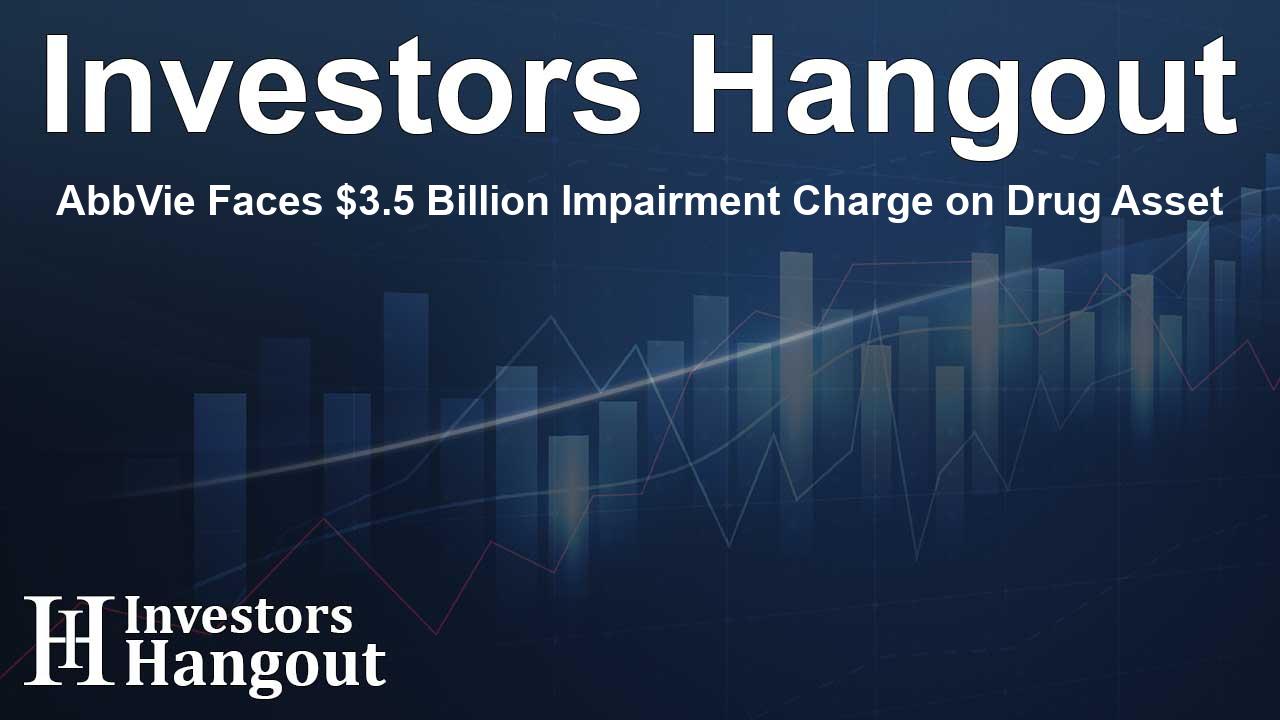AbbVie Faces $3.5 Billion Impairment Charge on Drug Asset

AbbVie Announces Significant Impairment Charge
AbbVie (NYSE: ABBV) recently revealed its intention to record a considerable non-cash after-tax impairment charge of approximately $3.5 billion. This decision pertains specifically to the emraclidine asset, a drug under development targeting conditions such as schizophrenia and Alzheimer’s disease.
Understanding Emraclidine and Its Importance
Emraclidine represents a critical advancement in laboring to treat complex neurological disorders. Acquired through AbbVie’s strategic purchase of Cerevel Therapeutics, this asset was poised to be a significant part of AbbVie's therapeutic portfolio. However, the recent impairment suggests challenges ahead in its clinical development.
Ongoing Commitment to Clinical Development
Even with this notable charge, AbbVie remains committed to evaluating clinical information related to the development programs stemming from the Cerevel acquisition. The company is diligently focused on how best to optimize its remaining intangible assets, which currently hold a valuation of approximately $3.6 billion.
Strategic Implications for AbbVie
This impairment charge raises important questions about AbbVie’s future strategies and investments. The biopharmaceutical sector is marked by rapid changes, forward-thinking research, and the constant need for financial recalibration. AbbVie’s proactive steps in assessing its asset value highlights its efforts to maintain resilience in evolving market conditions.
Long-term Outlook for AbbVie
As a leading biopharmaceutical entity, AbbVie continues to navigate the complexities of drug development and investment. Despite encountering hurdles like the impairment of emraclidine, the company’s broader portfolio and strategic commitments could play a pivotal role in achieving its long-term goals and maintaining its market position.
Frequently Asked Questions
What is the impairment charge AbbVie is recording?
AbbVie plans to record a non-cash after-tax charge of about $3.5 billion related to the emraclidine asset.
What is emraclidine?
Emraclidine is a drug under development for treating schizophrenia and Alzheimer’s disease, previously acquired through AbbVie’s purchase of Cerevel Therapeutics.
How will this impact AbbVie's financial strategy?
This impairment may require AbbVie to reassess financial strategies and investments, focusing on optimizing its remaining assets valued at roughly $3.6 billion.
Is AbbVie still investing in clinical trials?
Yes, AbbVie is actively evaluating clinical development programs related to the assets acquired from Cerevel Therapeutics.
What challenges does AbbVie face moving forward?
AbbVie faces the challenge of managing asset impairment while maintaining a commitment to advancements in treatment and sustainability in the competitive biopharmaceutical market.
About Investors Hangout
Investors Hangout is a leading online stock forum for financial discussion and learning, offering a wide range of free tools and resources. It draws in traders of all levels, who exchange market knowledge, investigate trading tactics, and keep an eye on industry developments in real time. Featuring financial articles, stock message boards, quotes, charts, company profiles, and live news updates. Through cooperative learning and a wealth of informational resources, it helps users from novices creating their first portfolios to experts honing their techniques. Join Investors Hangout today: https://investorshangout.com/
Disclaimer: The content of this article is solely for general informational purposes only; it does not represent legal, financial, or investment advice. Investors Hangout does not offer financial advice; the author is not a licensed financial advisor. Consult a qualified advisor before making any financial or investment decisions based on this article. The author's interpretation of publicly available data shapes the opinions presented here; as a result, they should not be taken as advice to purchase, sell, or hold any securities mentioned or any other investments. The author does not guarantee the accuracy, completeness, or timeliness of any material, providing it "as is." Information and market conditions may change; past performance is not indicative of future outcomes. If any of the material offered here is inaccurate, please contact us for corrections.